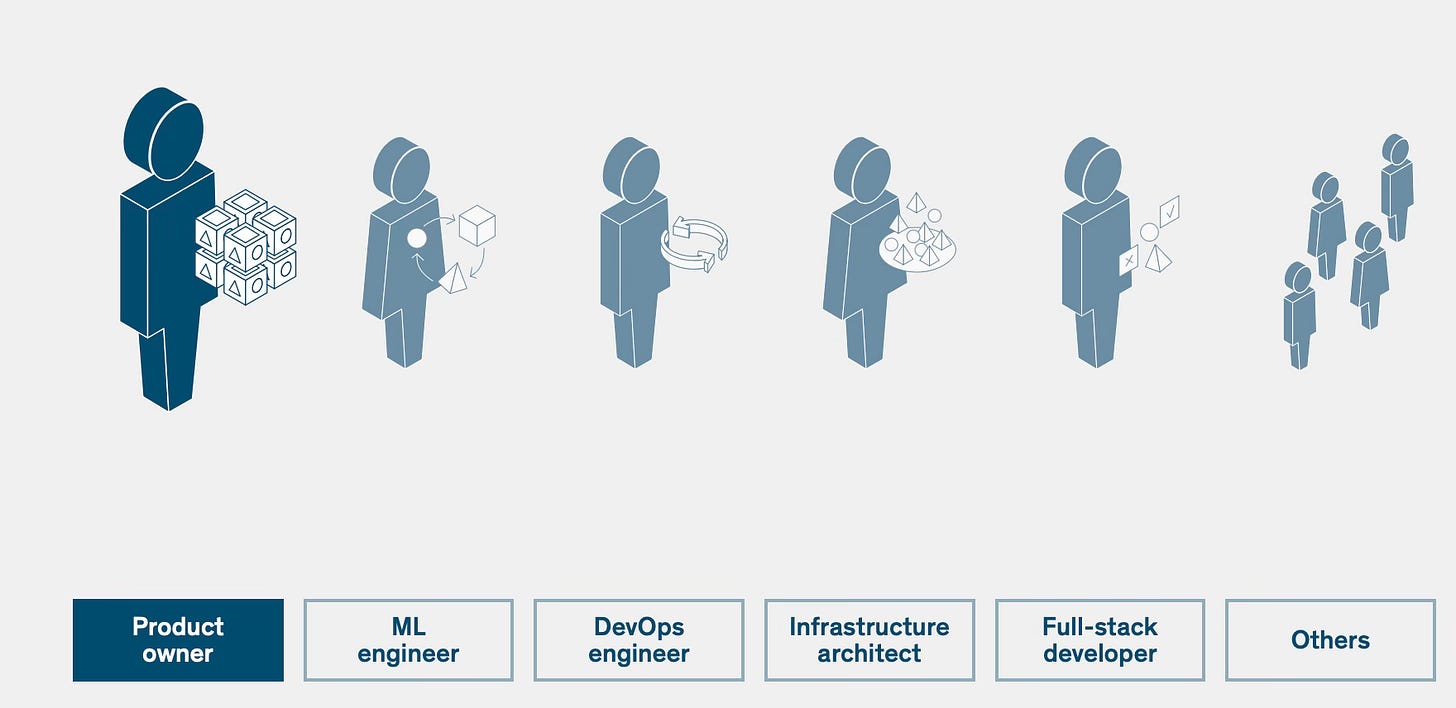Stop mucking about with AI: A product manager's toolkit to real implementation
From pilot projects to profit - what actually works in enterprise AI integration
Quick Take (30-second read):
Ever tried implementing AI and felt like you're trying to nail jelly to a wall? Now that I am deep into product work, I have seen more failed AI projects than Five Guys burgers I've had.
Here's the thing: Successful AI integration isn't about having the fanciest model. It's about getting the basics right.
In the next 5 minutes, you'll learn to avoid common pitfalls and how to deliver real value to your business.
The State of Play: Why most AI projects go bottoms up
If you're tired of hearing about AI without seeing actual results, you're not the only one. I've watched companies waste money on AI, only to get expensive paperweights.
“The problem isn't the technology - it's how implementation will turn out.”
Think of AI integration like opening an East End pub (my Local Roots). You wouldn't just buy a fancy beer tap and expect punters to come rolling in, would you? The same goes for AI. You need the right infrastructure, trained staff, and a clear idea of what your customers actually want above all else.
Let’s dive deep into the toolkit to help you get ready for implementation.
Toolkit 1 - A simple AI-implmentation readiness checklist
Know the foundations of the house
Before you start splashing the cash on AI solutions, you need to know what you actually need in your technical toolbox.
Here's where I start as a product manager:
Data Infrastructure
Is there a data lake, data warehouse, or database (I also recommend understanding tech tools like Snowflake or Databricks)
Is it Batch, Stream, or Real-time streaming in place (Apache Kafka is something I've come to get to know)
Are ETL pipelines in place (Airflow is a nice solution, but other cloud providers work here)
Cloud Platform Setup
What compute resources are in place (AWS, Azure, or GCP)
What container orchestration is in place (Kubernetes is a good shout, Docker Compose if you're starting out)
API management tools (there's a few)
Run a pilot and prove its success
Let's imagine a UK retailer has rolled out a simple AI solution for customer service. Shops-R-Us to keep the Lawyers happy!
Using a pilot will helps to prove our AI integration, fast:
Started small: one product category, one type of query.
Test the foundation: data pipelines working, clean training data used.
Human-in-the-loop: both technical and customer service staff should know how they will work with AI.
Measured everything: response times, customer satisfaction, cost per interaction.
The result? A % reduction in first-response time and £X saved in the first year.
Toolkit 2 - Work with your implementation dream team: the human side of AI
Now, let's get into the nitty-gritty of the toolkit.
I've seen enough companies hire a couple of data scientists fresh out of uni and expect magic to happen. That's about as effective as trying to build a house with architects and no builders.
Here's what your implementation dream team should actually look like, based on my time at QuantumBlack (A McKinsey&Co Company):
Data Engineers
Not just SQL jockeys, but proper data plumbers.
Need to understand both legacy systems and modern tools, these are the peps.
They're obsessed with data quality (trust me, this matters when you scale).
ML Engineers
They're the bridge between research and production.
Translators between DevOps as well as ML.
Pragmatic, and not just theoretical.
Domain Experts
Your secret weapon.
The ones who actually understand your business.
Usually overlooked, always essential
"Your best AI implementation ideas will come from the people who've been solving these problems manually for years."
Toolkit 3 - Scaling without falling over
Right, you've got your pilot working. Now comes the tricky bit - scaling without everything going pear-shaped.
Here's what actually works: (from my scar tissue)
Create a scaling roadmap
Here's how I'd scale our Shops-R-Us:
Common Scaling Pitfalls
I've seen these trip up even the smartest teams:
Premature Scaling
Trying to run before walking.
Not having proper monitoring in place.
Underestimating infrastructure costs.
Data Quality Issues
Not accounting for edge cases
Missing data validation
Poor error handling
“Scale gradually, monitor religiously, and always have a rollback plan. Trust me, you'll need it."
Key Takeaways
Rather than just rattling off a list, here's what you really need to remember:
✨ Start Small, Think Big: Begin with a focused pilot that can show real value. Build foundations that can scale. Keep your eye on the long-term prize.
🔧 Get Your Tools Right: Invest in proper data infrastructure. Set up monitoring from day one. Choose tools that grow with you.
👥 Build the Right Team: Mix technical and domain expertise. Foster collaboration between teams. Invest in upskilling your existing staff.
Until next time, keep it real and keep it practical.
Drop a comment below if you've got war stories of your own to share - I read every response.
Cheers, Tim







